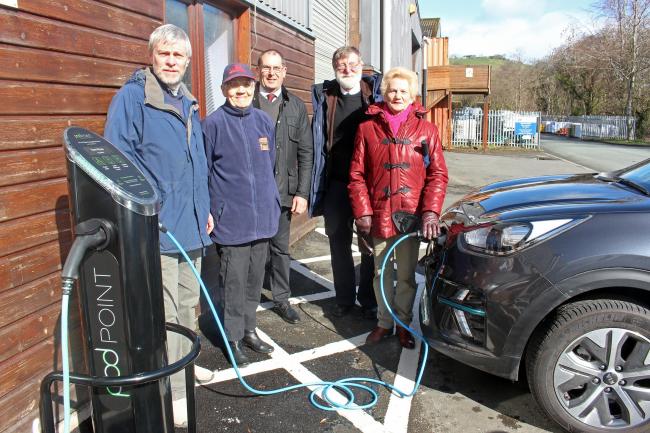- Joined
- 27 Jan 2008
- Messages
- 27,719
- Reaction score
- 3,361
- Location
- Llanfair Caereinion, Nr Welshpool
- Country

When I had a caravan parked close to the house and plugged it in to charge battery I used the TN-C-S supply as you could touch the gas and electric meters as the same time as the caravan, so considered the two should be connected to the same earthing system.
When using the caravan fire regulations mean must have 3.5 meter gap at corner or 5 meters at sides, so having a caravan on TT and building on TN-C-S on a caravan site there is no real danger, and so on a caravan site always TT OK I know TN-S is allowed but in practice normally TT, but at home when parked close to house, then same earth as house.
However in last few years we have seen the electric vehicle, where more than 70 volt is used for the supply, so not mobility scooters, ebikes, fork lifts or milk floats, and it seems like the caravan, boat or petrol station TN-C-S is not permitted, however some of these supplies are actually on the building wall, local milk man has the supply to car within a meter of the gas and electric meters, so the van can be parked where you can touch both the meters and the vehicle at the same time, in fact it would be natural for one to touch the vehicle when standing up again after reading meter.
Clearly from the fires reported, where it took I seem to remember 5 days to put out the fire when Richard Hammond crashed an electric car, it would be daft to garage an electric vehicle while charging it in an integral garage, in fact really there should be the same gap as allowed for caravans, but often there simply is not the option. Even commercial the charge points tend to be close to buildings.

This shows my local one, very close to a steel roller shutter door, which will be earthed to building earth, and close to wood panelling of a building with no fire alarm system installed as waiting renovation. The building supply is two three phase TN-C-S supplies.
I would hope this is safe, and since no one sleeps in that building even if a fire one one should get killed, and in this case they do light fires in the local buildings although not that one, and it is common to see smoke pouring out of the building, which of course means any smoke would be ignored that's normal.
So how safe are these vehicle charging points, one electrical with different earth to main building and two fire wise.
When using the caravan fire regulations mean must have 3.5 meter gap at corner or 5 meters at sides, so having a caravan on TT and building on TN-C-S on a caravan site there is no real danger, and so on a caravan site always TT OK I know TN-S is allowed but in practice normally TT, but at home when parked close to house, then same earth as house.
However in last few years we have seen the electric vehicle, where more than 70 volt is used for the supply, so not mobility scooters, ebikes, fork lifts or milk floats, and it seems like the caravan, boat or petrol station TN-C-S is not permitted, however some of these supplies are actually on the building wall, local milk man has the supply to car within a meter of the gas and electric meters, so the van can be parked where you can touch both the meters and the vehicle at the same time, in fact it would be natural for one to touch the vehicle when standing up again after reading meter.
Clearly from the fires reported, where it took I seem to remember 5 days to put out the fire when Richard Hammond crashed an electric car, it would be daft to garage an electric vehicle while charging it in an integral garage, in fact really there should be the same gap as allowed for caravans, but often there simply is not the option. Even commercial the charge points tend to be close to buildings.

This shows my local one, very close to a steel roller shutter door, which will be earthed to building earth, and close to wood panelling of a building with no fire alarm system installed as waiting renovation. The building supply is two three phase TN-C-S supplies.
I would hope this is safe, and since no one sleeps in that building even if a fire one one should get killed, and in this case they do light fires in the local buildings although not that one, and it is common to see smoke pouring out of the building, which of course means any smoke would be ignored that's normal.
So how safe are these vehicle charging points, one electrical with different earth to main building and two fire wise.
